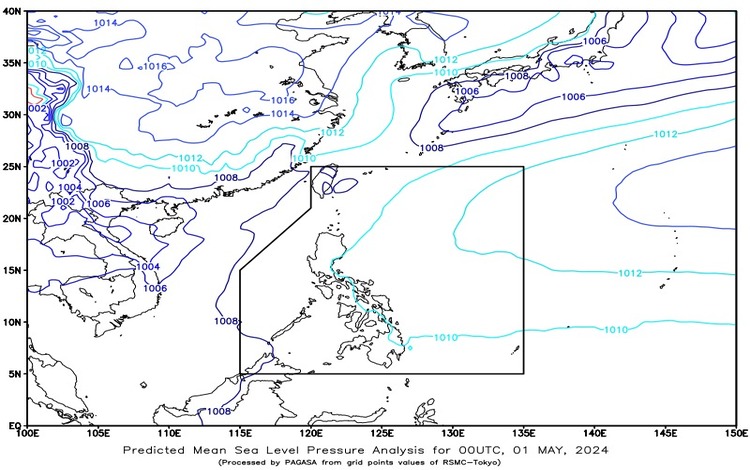As the dawn of May 1, 2024 approaches, weather patterns across the Philippines paint a varied picture, influenced by two distinct weather systems. The Intertropical Convergence Zone (ITCZ) is dominating southern Mindanao, while easterlies sweep across the rest of the archipelago.

Southern Mindanao: Sultan Kudarat, Saranggani, Basilan, Tawi-Tawi, and Sulu
Residents in southern Mindanao should brace themselves for cloudy skies punctuated with scattered rain showers and thunderstorms, all thanks to the looming presence of the Intertropical Convergence Zone (ITCZ). These weather conditions carry the potential for moderate to heavy rains, heightening the risk of flash floods or landslides in vulnerable areas.
Metro Manila and the Rest of the Country
For Metro Manila and the rest of the country, partly cloudy to cloudy skies are expected, with isolated rain showers or thunderstorms anticipated throughout the day. This weather phenomenon is attributed to easterlies and localized thunderstorms. While the skies may not be as overcast, the possibility of severe thunderstorms looms, underscoring the importance of remaining vigilant against flash floods or landslides, particularly during periods of intense rainfall.
Forecast Wind and Coastal Water Conditions
Across Luzon, expect light to moderate winds blowing from the southeast to south, accompanied by slight to moderate coastal waters measuring between 0.6 to 2.1 meters. Meanwhile, in Visayas and Mindanao, winds will be light to moderate, blowing from the east to southeast, with coastal waters exhibiting similar slight to moderate conditions.
The weather forecast for May 1, 2024, paints a diverse picture across the Philippines. While southern Mindanao grapples with the influence of the Intertropical Convergence Zone (ITCZ), bringing about cloudy skies and scattered rain showers, the rest of the country, including Metro Manila, faces the prospect of isolated thunderstorms due to easterlies and localized weather systems. Residents are advised to stay informed of updates from local authorities and to take necessary precautions to mitigate the potential risks associated with inclement weather conditions, such as flash floods or landslides. As always, safety remains paramount in navigating the ever-changing landscape of Philippine weather.
